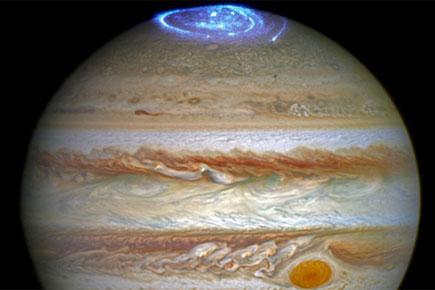Vivid glowing auroras in Jupiter's atmosphere! Astronomers are using the Hubble Space Telescope to study auroras - stunning light shows in a planet's atmosphere - on the poles of the largest planet in the solar system, Jupiter.

Vivid glowing auroras in Jupiter's atmosphere! Astronomers are using the Hubble Space Telescope to study auroras - stunning light shows in a planet's atmosphere - on the poles of the largest planet in the solar system, Jupiter.
ADVERTISEMENT
Auroras are created when high-energy particles enter a planet's atmosphere near its magnetic poles and collide with atoms of gas. As well as producing beautiful images, this program aims to determine how various components of Jupiter's auroras respond to different conditions in the solar wind, a stream of charged particles ejected from the sun.
NASA's Jupiter-bound Juno spacecraft has entered the planet's magnetosphere, where the movement of particles in space is controlled by what is going on inside Jupiter.
Juno is on course to swing into orbit around Jupiter on July 4. Science instruments on board detected changes in the particles and fields around the spacecraft as it passed from an environment dominated by the interplanetary solar wind into Jupiter's magnetosphere.
 Subscribe today by clicking the link and stay updated with the latest news!" Click here!
Subscribe today by clicking the link and stay updated with the latest news!" Click here!







